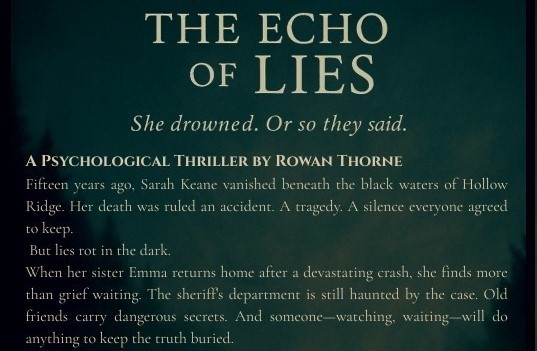
The Blurb Is a Promise: Why Those 150 Words Matter (and How I Write Them)
A working system for writing blurbs that sell the promise—and steer the draft.
Here’s my confession: I don’t truly know a book until I can pitch it in a paragraph. The blurb isn’t a marketing afterthought—it’s the spine of the story’s promise. If the blurb is vague, the draft usually is too. If the blurb sings, the book has a compass.
What a blurb actually does
- Hooks curiosity in the first line.
- Frames genre so readers know what kind of pleasure to expect.
- Names a protagonist and desire (who wants what).
- Hints at the engine of conflict (what’s in the way).
- Signals stakes (what breaks if they fail).
- Establishes tone/voice—mood is half the sale.
- Promises a question only the book can answer.
My 7-line blurb recipe (fill-in friendly)
- Time/Place/Tone in a beat.
- Protagonist + wound/quirk.
- Catalyst (the thing that yanks them off the couch).
- Goal (clear and active).
- Antagonistic force (person, system, secret, storm).
- Stakes that escalate (personal → public).
- Open question that compels the page turn.
Tiny example (before → after)
Before (meh):
A woman in a small town deals with mysterious events and must make a hard choice.
After (specific + voice):
At 12:03 each night, Cross Hollow slips—and Rowan Hale’s ledger rewrites one fact from the dark. When she uses it to undo a hit-and-run, the town forgets the witness, an Auditor arrives to balance the debt, and Rowan has until dawn to pay or lose the only person who remembers the truth. What’s one life worth when the ink keeps changing the math?
(Notice: time-stamp hook, concrete catalyst, named pressure, escalating stakes, open question.)
Voice matters—match the genre
- Thriller/Mystery: short sentences, sharp nouns, implied danger.
- Romance: interior desire, trope clarity, emotional stakes.
- Fantasy: world-glimpse + power system + price.
- Literary: image-driven specificity, moral tension.
Keep / Cut checklist
Keep: names, concrete verbs, one vivid detail, a single driving question.
Cut: backstory dumps, theme essays, more than two named side characters, spoilers past midpoint, adjectives that could fit any book (gripping, riveting, unforgettable).
Craft the first sentence last
The opener is your billboard. Once the body is tight, return to line one and sharpen it until it could sit on a bus ad and still intrigue.
A/B test like a publisher
- Make two blurbs with different angles (villain-forward vs. stakes-forward), then:
- Read them aloud—where does your breath catch?
- Send both to 3 trusted readers with one question: Which makes you click “Look Inside,” and why?
- Post the first lines as a poll to your newsletter or socials; track engagement. Data beats vibes.
Tools I use
- 25-word logline first; it forces clarity.
- Word cloud check: if “mysterious” and “dark” dominate, I recast specifics.
- Highlighter pass: protagonist (yellow), goal (blue), stakes (pink). If any color is missing, I fix it.
Final polish ritual
I print the blurb, cut it to 120–160 words, replace one cliché with a fresh image, and end on an unanswered question. Then I tape it above my desk. If the draft veers, that paragraph calls me home.
Your turn. If you want, drop your current blurb in the comments. I’ll pick one each week to tweak line-by-line—because the right 150 words can carry an entire book on their back.